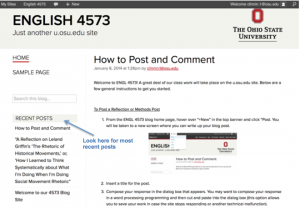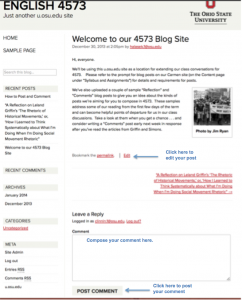If there is one idea that Cox and Foust make clear in The SAGE Handbook of Rhetorical Studies it is the idea that exacting a universal definition for Social Rhetoric is difficult. Cox and Foust systematically work through five different lenses through which one can analyze social movements namely,
(1) early studies of SMR
(2) rethinking the figure of “social movements”: New Social Movements (NSM) and counterpublics
(3) performing resistance: bodies, images, and public screens
(4) democracy, representation, and new modalities of social dissent
(5) continuing challenges for the study of SMR
While Cox and Foust do not provide a succinct definition for social movements at the end of their paper, I do not think this is because defining social rhetoric is an impossible feat. I do however think forming a definition would be complex and would require unconventional methods. Instead of defining social movements based on components of SMR, could it be more beneficial to form a definition by analyzing social movements as an inseparable unit?
We can think of analyzing social movements in terms of telescopes and kaleidoscopes. Cox and Foust suggest a telescope approach. They suggest looking at each component of SMR separately. They look at each component of SMR separately and intently—replacing one lens on the table before picking up another. A kaleidoscope perspective on the other hand is similar to the ideas that Griffin suggests.
Instead of viewing SMR as a series of subcategories, we can imagine SMR as a unit—each of the five subcategories blend together seamlessly—as in a kaleidoscope. Each category overlaps the next and are indistinguishable from one another. The different components of the social movement combine to create an altogether unique image.
Through this looking glass we are able to see the relationships between theories—both how they overlap and where they differ—and we are also able to develop a universal analysis of a single movement.—an analysis that speaks to not one or a few social theories, but one that responds to each instance of SMR simultaneously.
The theory that captures this idea most closely is the idea of Dramatism as discussed in class. In the same vein as the idea of a kaleidoscope analysis, Griffin suggests that “to study a movement is to study a progress, a rhetorical striving.” The Cox and Foust piece goes on to say “This rhetorical striving was “a progress from… a ‘suffering, misfortune, passive condition…,’ through ‘a deed… action, act,’ to an ‘adequate idea; the thing learned.’” In Griffin’s view, to study a movement was “to study a drama, an Act of transformation, an Act that ends in transcendence, the achievement of salvation (Cox 9).”
The recent movement headed by First Lady Barack Obama will be a useful example for this model. Conventionally this movement could be analyzed in terms of its history, how it differs from previous social movements, whether or not it is democratic, and etc. the list goes on.
However, when this movement is analyzed kaleidoscopically, or theatrically as Griffin suggests, we see the movement as a whole– a dynamic movement. It’s origin as is analyzed in (1) of Cox and Foust’s piece, are rooted in the alarming rates of childhood obesity however its origins are also rooted in (3) public screens and (4) democracy. A compartmentalized way of analyzing SMR doesn’t account for such overlap. SMR is a drama —a unit which we can compare and contrast to the universal strife and victory—or dissolution—of all social movements.
Citations:
Cox, Robert, and Christina R. Foust. “32 Social Movement Rhetoric.” The SAGE Handbook of Rhetorical Studies. Thousand Oaks: SAGE Publications, 2009. 605-28. Web.
Obama, Michelle. “Let’s Move!” Let’s Move! U.S. Department of Health & Human Services, n.d. Web. 24 Jan. 2014.




